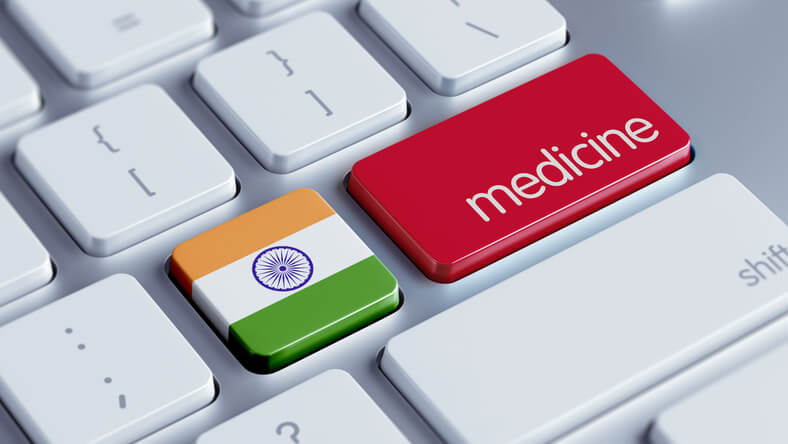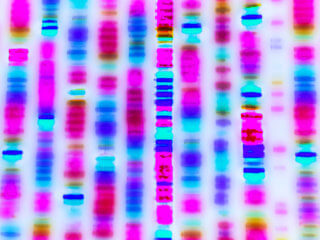The growth of digital health, eHealth, mHealth market in India
Health care has become one of India’s major areas – both regarding employment and revenue. Health care comprises telemedicine, hospitals, medical devices, health insurance, medical tourism clinical trials, and medical equipment. The Indian health care sector is growing at a fast pace due to its increasing private & public investment in the digital health market, strengthen coverage, and services. The low cost of health services has led to the expansion of the country’s medical tourism, attracting investment from across the world. Furthermore, India has developed as a hotspot for R&D for international players due to its moderately low cost of clinical research and quality talent. digital health market in India could be your next big destination.
Digital health is the merging of genomic and digital technologies with health, health care, and the world to improve the efficiency of healthcare delivery and make medications more precise and tailored. Healthcare providers and other supporters are using digital health in their efforts to:
Decrease inefficiencies, reduce costs, improve access, increase quality, and make more customized care for patients.
| Recommended for you | |
| Regulatory and policy framework for medical devices in India | |
| Digital health market in India over next 10 years | |
| The growth of Indian hospital infrastructure market |
What technologies & industries are part of the digital health market in India?
Digital technology acceptance is gaining distinction in India’s medical industry, with backing from both the private and public sectors. The industry has created mobile apps, telemedicine, devices, and set up innovation centers among other initiatives. The government has launched several initiatives such as Aadhaar and Digital India in some cases with support from the private sector. These initiatives and programs have drawn many digital health start-ups.
1. Telecare
Telecare is the term for technologies that assist patients to keep up their health and safety together while staying in their homes. This modern technology incorporates medical alert systems, mobile monitoring devices, and more.
2. Telehealthcare
Telehealth technology permits the remote diagnoses and assessment of patients for remote detection of fluctuations in the medical condition so that the medications or therapy can be altered accordingly. Combined in telehealth – the remote diagnosis of vital health signs, healthcare education services, blood pressure or ECG, and remote patient-doctor consultations.
3. Video Consultation
Video consultation is a particular type of telemedicine that uses technology to provide real-time audio and visual assessment remotely. A patient can directly communicate with the doctor and receive well-being and medical information.
4. mHealth
mHealth is a term for mobile health and used for the practice of medicine and welfare supported by mobile smart devices. The figure does exclude patients that use monitoring devices connected to a computer or cell phone. Fitness and Medical Apps are too moving the technological revolutions under mHealth.
5. Wearables Sensors
Wearable devices or equipment was one of the primary areas where digitization was used initially in healthcare. For example, heart monitors and Pedometers are present in the market for some time, helping people track the functions of their bodies and encourage themselves for well-being changes.
Some of the production technologies that are gaining prominence in the Indian healthcare industry are:
- Big data analytics: Big data is gradually entering the Indian healthcare domain. Many international healthcare players now realize the value of combining consumer insights, internal company information to inform and optimize their product offerings, and are so increasing funding in the necessary tools.
- Smart cities: People in the towns have begun to use digital technology to improve resource utilization within prevailing infrastructure.
- Electronic medical records (EMR): EMRs are starting to be adopted by many healthcare providers. This digitization has set the way for advanced futuristic IT systems, such as cloud computing and health information systems to increase remote and availability to patient data. This should help improve health outcomes and reduce medical errors.
What is their largest market share?
- India’s telemedicine market was appreciated at 100 million USD in 2011 and is expected to rise by over four times by the end of 2017.
- M-health is possibly one of the biggest sectors in India within digital healthcare, with a projected market size of 416 million USD in 2015 —which is set to increase to 1 billion USD INR by 2020. A recent study presented that 68% of doctors in developing markets like Brazil, India, and China recommend m-health and 59% of patients are already using.
- India’s international healthcare delivery market was valued at 7.5 million USD in 2011 and is likely to grow at a CAGR of 20%.
- Social media is growing bigger every day in India, with the average individual spending 25% of his or her time on social networking sites and Google.
- The overall healthcare wearables market in India is currently valued at 6 million USD and is expected to increase exponentially shortly as well.
What are the growth projects of these various segments?
Telemedicine is an emerging sector in India; several major hospitals (Apollo, Narayana Hrudayalaya, AIIMS) have acknowledged telemedicine services. As per a recent survey, the telemedicine market in India was projected at 7.5 million USD and is expected to rise to 18.7 million USD by 2017.
Mobile health industry in India is expected to reach 0.6 billion USD by 2017. Cycle tel Humsafar is an SMS based mobile service planned for women; it enables women for family planning in a much better way. Also, there are currently over 20 mobile healthcare service initiatives in the country for spreading information about health, well-being, family planning, and other ailments.
To uplift the quality of service delivery, cost control, and improve patient engagement, healthcare providers are concentrating on the technological aspect of Mobile Healthcare, Electronic Medical Record, Hospital Information System, Electronic Health Record, healthcare delivery –PRACTO, Health Kart is some of the mainstream technologies gaining full acceptance in the sector.
What is the overall growth of the digital health market in India?
The overall Indian healthcare market is valued at around 100 billion USD and is expected to grow at a CAGR of 22.9% to reach 280 billion USD by 2020. Healthcare delivery including pharmaceuticals, hospitals, clinics, and diagnostics centers constitutes 65% of the overall market.
The existing Healthcare Information Technology (IT) market which is valued at 1 billion USD is likely to grow 1.5 times faster.
With more number of hospitals receiving recognition and getting accredited, more awareness on the need to improve their quality to meet the international standards.
How much funding is flowing in this industry?
The diagnostic centers and hospitals have attracted Foreign Direct Investment (FDI) worth 4.09 billion USD from Apr 2000 to Sep 2016, as per a report published by the Department of Industrial Policy and Promotion (DIPP).
Some of the critical investments in the Indian healthcare industry are as follows
- Max Healthcare (a health institute based in New Delhi, India) is proposed to invest 48 million USD in building a cancer care hospital in Delhi.
- Practo Technologies Pvt Ltd has raised 55 million USD in Series D round of funding led by Tencent Holdings Ltd, a Chinese investment holding company.
- A UK-based development finance institution, CDC, has funded 48 million USD in Narayana Hrudayalaya to expand affordable treatment in India.
- Gamma Group, UAE-based firm, is finalizing plans for investing around 449.68 million USD in the health infrastructure and education sectors.
What’s the prognosis for the next ten years?
As India’s health system evolves towards the ambitious state, numerous fundamental factors are in place. Both the private and public sector should provide adequate investment, with encouragements to invest in local manufacturing and healthcare delivery in urban and rural areas.
The infrastructure for healthcare delivery must be ready to meet the expected growth in demand, as the income of the middle class is rising. Trained workforce in each sector must be available across the nation. Consumers will need high levels of health responsiveness and should be prepared to take separate responsibility for health conclusions. Healthcare Analytics can serve as the pillar for the effective application of these initiatives, tracking outcomes and providing ailment observation. The Indian government will need to expand the level of cooperation for the steady implementation of health care initiatives.
Image credit: www.istockphoto.com


















Very Good article at digital healthcare. thanks for sharing with us.
with regards
Dr seema singh